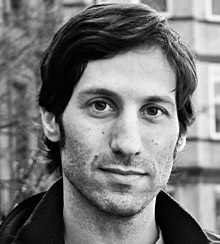David Zweig on the Invisible Leader
Author David Zweig discusses the true power of modesty in management.
It’s noisy out there. Between talk radio, cable news, Facebook, Twitter, LinkedIn, and all the rest of the new and old media, we’re being shouted at, shared with, and pestered without respite. It’s a look, listen, pay-attention-to-me-now world. And one that just keeps getting louder.
But there is an important and influential group of people who manage to avoid the clatter. Quietly, modestly, they do their work diligently, and without a desperate need for personal recognition. They can be found in almost any profession and at every organizational level. They might be anesthesiologists, structural engineers, cinematographers, or business leaders. David Zweig, a lecturer and journalist who has written for the Atlantic, the New York Times, and the Wall Street Journal, lovingly calls these people “Invisibles”—and in his fascinating new book, Invisibles: The Power of Anonymous Work in an Age of Relentless Self-Promotion (Portfolio Hardcover, 2014), he lays out a strong case for their importance in making the world go around.
Zweig recently spoke with strategy+business about the nature of the Invisibles, and why, despite their personal modesty, even shyness, they so often make such effective leaders.
S+B: Who are the Invisibles, and what makes them tick?
ZWEIG: Invisibles are people who feel ambivalent about gaining widespread recognition for the work they do—and sometimes they’re flat-out averse to it. It’s not that they don’t appreciate praise. They’re quite happy to be recognized for their work by their peers, for instance. But that’s not what drives them.
What motivates Invisibles is the work itself. They take great pride in their work and how they do it. Every Invisible I spoke to is highly meticulous about the work they do, whether it’s tuning pianos or building the tallest skyscrapers in the world. And they all willingly take on—the word I use is savor—the responsibility that invariably comes with their jobs.
They enjoy the process of being immersed in their work, that sense of “flow,” and the feeling of psychological well-being that comes with accomplishing a task really well, or accepting new challenges in their work. That’s the real reward for these people, not grabbing attention for themselves. Psychologists refer to this as being inspired by intrinsic motivators, as opposed to extrinsic motivators like money or attention.
S+B: Given the nature of the Invisibles, you’d think they would shy away from leadership roles. Is that the case?
ZWEIG: Not at all. Certainly, true Invisibles don’t actively seek out the extrinsic rewards of leadership—the fame, the pictures on the covers of magazines. And several of the Invisibles I interviewed for the book are just not doing the kind of work that might lead to leadership positions.
But Invisibles can make great leaders. Take Dennis Poon, who has been the lead structural engineer on many of the world’s tallest buildings, including the recently topped-off Shanghai Tower, the tallest building in China and the second-tallest building in the world [after the Burj Khalifa in Dubai, United Arab Emirates]. He heads large teams of professionals—structural engineers, wind experts, seismic experts, and so on—whose job is to ensure the structural integrity of towers costing billions of dollars. It’s a huge responsibility, and though the public tends to think only of the architect, Poon revels in the responsibility he takes on. “It’s an honor,” he told me.
This quality is maybe the most important element in Invisibles’ becoming effective leaders. There are plenty of shy people who aren’t looking for outward recognition, and plenty of people who are super-meticulous about their work. But it’s the willingness—even eagerness—to accept responsibility that can turn an Invisible into a real leader.
It’s the willingness—even eagerness—to accept responsibility that can turn an Invisible into a real leader.
S+B: How does responsibility itself equate with effective leadership?
ZWEIG: On one level, it’s simply that as Invisibles take on more responsible roles, while also becoming better and better at what they do, others become more and more willing to follow them. But even more importantly, it is in their nature to insist on, and take responsibility for, getting the job done right, without worrying about how it might make them look or the rewards they might reap as a consequence. And that, in turn, makes them great team players, and thus team leaders, utterly willing to subjugate their own need or desire for personal recognition to the ability of the team to get the job done. Poon kept saying to me, “engineering is always a team effort.”
Another person I interviewed for the book was Robert Elswit, a cinematographer who’s worked on movies like There Will Be Blood (for which he won an Oscar) and the Bourne and Mission: Impossible movies. After the director, the cinematographer is arguably the most important person on a movie set. He’s in charge of the overall look and feel of a film, as well as most of the people on set—the scores of skilled technicians, the grips, gaffers, and all the rest.
On these multimillion-dollar enterprises, Elswit is very much a leader. But he couldn’t do his job unless he was also a great collaborator, both with the director—his “boss”—and with all the supporting experts and craftspeople. I expected someone of his stature to be ironfisted or at least a bit rude, but watching him on set, he’s quite the contrary. He understands that he can’t get his job done by himself, and that barking out orders and banging on the table isn’t going to work. Elswit knows that he needs all the people on the set to be working together in a highly coordinated way, and that the only way to get the results he wants is to collaborate with them closely and happily.
Elswit is what the Wharton professor Adam Grant calls a “giver.” He contributes to others and the project as a whole, rather than seeking to aggrandize himself. And that attitude is ultimately what has led him to his high perch. It seems a bit counterintuitive, but there’s a wealth of evidence that shows that laboring not for oneself but for the project, and seeing oneself as a member of a team rather than as a special outlier, has a strong correlation with rising to be in charge of the team.
S+B: Is there a type of person most likely to follow an invisible leader?
ZWEIG: Remember that Invisibles have to be really good at building great teams, and at leading them toward a common goal, without the need to take all the credit for the work the team does. And there’s quite a bit of research that shows that people notice when someone is selfless, and they reward that person with more authority. So Invisibles are probably very likely to attract other Invisibles to their teams—people who are equally focused on working toward the overall goal.
But that doesn’t mean invisible leaders are simply hardworking nice guys. Their determination to get the results they want can just as likely lead to a rough-edged single-mindedness in putting together the right team for the task at hand, and some may find that off-putting. Non-Invisibles, people who have a strong need to be recognized for the work they do, probably need not apply.
S+B: And yet in business, as elsewhere, it always seems to be the people most willing to toot their own horns who get ahead. Is that inevitable?
ZWEIG: I don’t think so. It’s most likely a matter of culture. There are plenty of dysfunctional organizations that are driven by politics, but as with all organizational cultures, that atmosphere is determined at the top. I think it takes a truly invisible leader to create a culture of “invisibility,” where the organization’s overall goals are seen as more important than any individual’s personal advancement. And there’s a good amount of evidence that those organizations are the most successful in the long term. Author Jim Collins’s Level 5 leaders are a case in point: Representing the highest degree of leadership on his scale, they create great companies “through a paradoxical combination of personal humility plus professional will.” And they’re critical: Collins identified only 11 companies that went from good to great between 1965 and 1995, and all of them made the move thanks to their Level 5 leaders.
We assume that powerful business leaders are blustery and outgoing, but that’s often not the case. It’s fascinating, even heartening, to think that caring about the end result, more than calling attention to oneself, ultimately does correlate with attaining authority. Unfortunately, I think we often miss this message amid all the self-promotion in the workplace, and at large, today.![]()
Author profile:
- Edward H. Baker is a longtime business journalist and a contributing editor at strategy+business.



